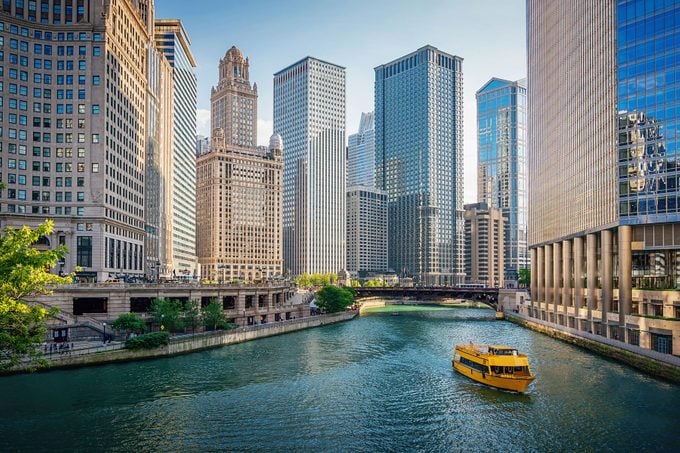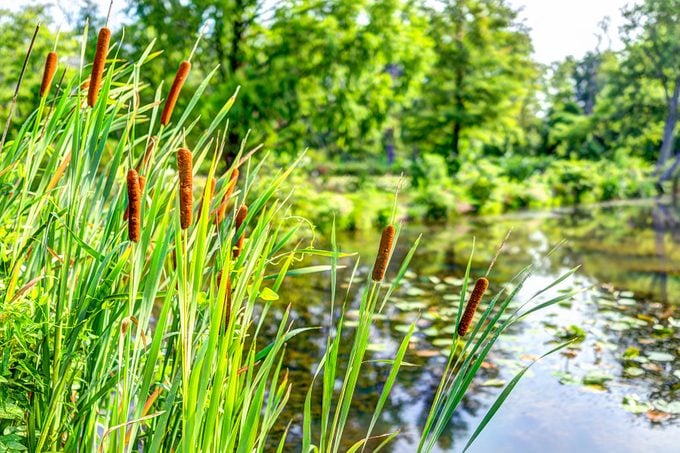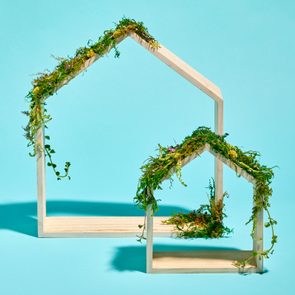Meet Chonkosaurus, the Viral Massive Snapping Turtle In the Chicago River
Updated: Mar. 13, 2024

Chonkosaurus is a marvel, so here are tangible things you can do to protect local wildlife like her.
Last week, two individuals were kayaking down the Chicago River when they unexpectedly spotted a ginormous snapping turtle. One of the kayakers, a botanist named Joey Santore, caught the delightful “beast” on video, and a viral sensation was born.
To get a better understanding of the Internet-famous snapping turtle—dubbed “Chonkosaurus”—as well as the native fauna supporting this magnificent beast, we spoke with Santore. Here’s what he had to say. (This interview has been lightly edited for clarity.)
Chicago River Snapper aka Chonkosaurus. Great to see this beast thriving here on what was once such a toxic river, but is slowly getting cleaned up & restored. Somebody planted a bunch of native plants up the river from here, too. I can only wonder this things been eating. pic.twitter.com/u6bhlpo4p5
— Joey Santore (@JoeySantore) May 6, 2023
Meet Chonkosaurus, the Giant Snapping Turtle
According to Santore (who insists he has “no accreditation at all”), Chonkosaurus is likely a pregnant female snapping turtle, approximately 50 years old, and about 50 pounds. One of the reasons the video has likely caught on so well is Santore’s obvious excitement over how incredibly healthy Chonkosaurus is.
In the video narration, Santore exclaims to the turtle, “You look good! I’m real proud of you! You been eating healthy?” That healthy diet is key to understanding Chonk, especially how she got so big and why she’s in the Chicago River now.
Why Chonkosaurus is in the Chicago River
The Chicago River is home to two main species of turtles: snapping turtles and pond sliders. Santore believes that Chonkosaurus was “probably born further upstream in the suburbs and came back as the river cleaned up [and] industry left.” Her presence now is due to a few main factors, including a decrease in industry pollution by the Chicago River, as well as heightened food sources, thanks to the reintroduction of native plant species.
Decreased Pollution in the Chicago River

Santore recalls a time in his childhood when the river had “the smell of sewage and algae blooms” and was “extremely toxic.” Santore credits this toxicity to industry waste mismanagement, saying, “industry [put] the ecosystem into a coma…They [screwed] the river up, dumped into it and didn’t care.”
However, now, there is fortunately only one industry building left on the Chicago River, “a cement plant on the other side of Goose Island.” Santore says that this cleanliness may be “the only good thing about gentrification.” He explains: “As condos have gone up and rents have gotten way more expensive, it’s lowered the tolerance for industry.” This renewed interest in cleanliness has granted a wider opportunity for local flora and fauna—including Chonkosaurus—to thrive.
Increased Food Sources for Snapping Turtles
Santore explains that “snapping turtles scavenge as well as hunt,” so they will eat carrion and some plants, as well as small mammals, geese, ducks, fish and insects. All of these animals—predator and prey—rely on plants for their survival and are part of a healthy biodiversity. This biodiversity is particularly supported by native plants, which can offer higher quantities of food than their non-native counterparts.
Santore takes Buckthorn as an example, a non-native plant on the Chicago River that came over from Europe. He calls it “cancerous” and “analogous to a tumor cell,” as it “crowds out healthy biodiversity and creates a monoculture.” While local birds can “get some food” from the Buckthorn plant, Santore explains that it’s “not as much as they’d get from the 15 or 16 other native species that would grow there if the Buckthorn wasn’t.”
The native species that thrived on the Chicago River 200 to 300 years ago are being added back by impassioned environmentalists and non-profit groups, such as Urban Rivers, a Chicago-based organization focused on ecological restoration and community growth. Recently, Urban Rivers has been building floating bioswales on top of which they plant native plants. The creation of these bioswales is thus vitally and directly linked to the survival and health of animals like Chonkosaurus.
How to Protect Your Local Flora and Fauna
Besides the obvious advice of not polluting the river, one of the best ways to protect animal friends like Chonkosaurus is to support the growth of native plants. There are many ways to get involved in these efforts, from donating or volunteering for restoration projects to planting your own native plants. When we asked Santore how people might go about growing their own native plant gardens, he had a few suggestions.
First, look up what plants are native to your area. For Chicago, this could be native hibiscus, cattails, lizard tails or swamp milkweed. To find your area’s native plants, search for your state’s wildflower website, which may have both land and aquatic plant sections.
Then, Santore says, you just have to get planting. Ideally, he recommends “killing your lawn,” which takes up huge amounts of water, and replacing it with a native garden. Or, you could start “guerilla planting or creating your own urban bioswales.” Santore insists that “anyone can do it” and names it as a particularly great project for “retirees with a decent pension and some time, or anyone else who have time and resources to volunteer towards bettering their local ecologies.”
If you’re interested in creating a bioswale, you’ll need to create a floating raft or biodegradable materials, “fill it with a substrate like lightweight pumice rock or clay aggregate,” and then add a layer of hay on top. From there, just plant native aquatic plants and set the raft free in your river.
Healing Our Ecosystems, Healing Ourselves

Santore hopes Chonkosaurus will help raise awareness around the importance of native plants and inspire people to get more involved in the protection of their local ecosystems. “Humans are a part of nature, not separate from it,” he explains. “We need to start becoming more aware of the ecosystems that inhabit the places we live, that inhabited these places long before our homes were built. It creates a healthier landscape and a healthier mindset, [as well as] a sense of connection and being with a place.”



















